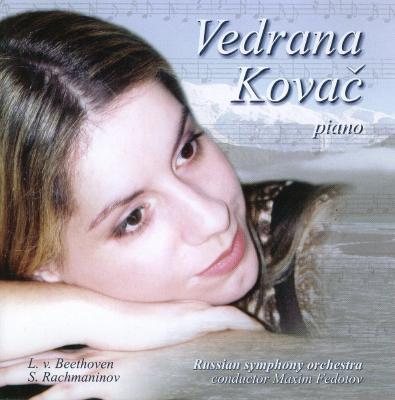|
<<< << -- 5 -- Malcolm Troup AN EXTRAORDINARY SHOWCASE -- >> >>>

Excitement reached fever pitch on the second of the three Fridays with the eagerly awaited début of much travelled Vedrana Kovac, a Montenegran laureate of the Moscow Tchaikowsky Conservatoire. I had heard her the previous year when I was a judge of the Gina Bachauer International Piano Masters Competition in Salt Lake City USA, where she stood out even among the assorted world-beaters gathered there. Rehearing her confirmed my appreciation of her talents in a programme stretching from Beethoven to Wagner-Liszt and Rachmaninov. Her 32 Variations could not have been bettered, neither for fleetness of finger nor for responding proactively to the rise and fall of each phrase as it took its rightful place in the architectonics of her overall conception. (She had obviously taken her previous day's lesson with Steven Kovacevic, one of our Patrons and a frequent jury-member of our Beethoven Intercollegiate Piano Competition, much to heart.) Her Chopin Ballade No 4 was likewise a model of long-term planning, beginning the final drive to the climax and conclusion of the work deliberately enough to transmit each note of the thickened texture (so often lost through over-anxious speeding) before beginning her accelerando.
Vedrana is a born communicator who never lets a phrase escape her without its being drained of its full emotional and structural weight in the scheme of things, with which the fact that she is also an accomplished singer has much to do. The first of Four Impromptus by Schubert showed her power to revel in the composer's long lyrical lines with no intrusion of the preceding Beethovenian Sturm-und-Drang.
An unexpected addition to her programme was Schubert's harrowing Erlkönig transcribed by Liszt -- a tour de force of an earlier generation of master-pianists which Vedrana dramatised to full effect. Only once or twice did she allow the vocal line to be overridden by the accompanying figuration -- a problem which also recurred in the Wagner-Liszt and Verdi-Liszt. Despite her confession to me that she was playing the Liebestod for the first time, her sense of timing in the mounting climaxes leading to the final transfiguration was masterly as was also the supreme virtuosity of her Rigoletto paraphrase.

Vedrana Kovac
|
This was playing in the grand manner yet never exaggerating volume or velocity for effect as apart from musical substance. The audience sensed that they were in the presence of a superlative artist and wouldn't let her go until she had confirmed her triumph with Rachmaninov's transcendental E minor Etude by way of encore.
Continue >>
Copyright © 15 August 2007
Malcolm Troup, London UK

| 
